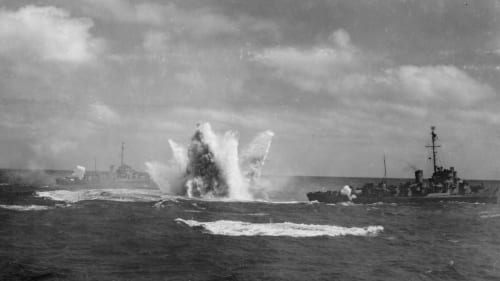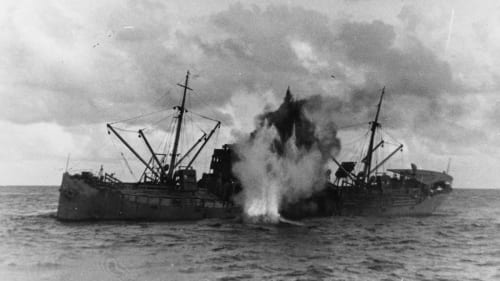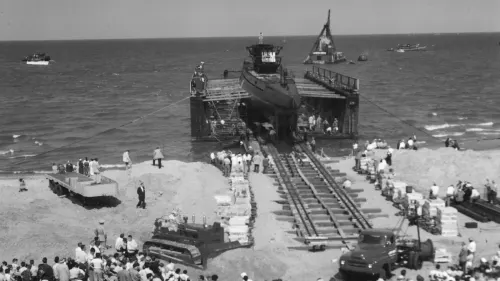U-505 Restoration and Relocation
Conserving the U-505
A typical German sub was built to last four years. Fifty years of turbulent Chicago weather may have proven to be the U-505's most brutal enemy. Indeed, left untreated and outdoors, it would have been unsafe for tours by 2004. And so, in 1997, the Museum launched the largest exhibit conservation project in its history — to preserve the U-505 and move it indoors to a climate-controlled environment. A large crew spent five months welding, cleaning, repairing and painting the hull. Brackets, stringers and ribs were re-manufactured using original construction drawings recovered from Germany and the patterns from badly eroded parts. It was difficult to find the sub's original color. The Museum conservation team used photos, a German archive painting manual, veteran recollections and more, so the sub could be conserved authentically. Ballast by ballast, tank by tank, the team installed reinforcements, focusing on jacking points and cradle locations. Ultimately, it took more than two years to ensure that the U-505 was structurally sound.
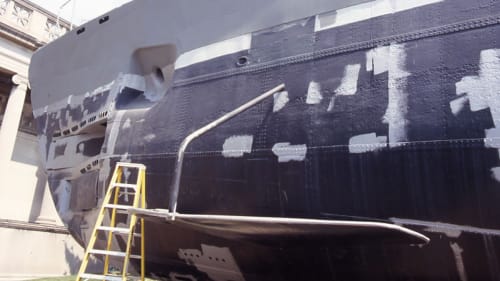
Relocating the U-505
Imagine the unique engineering challenges involved in moving the U-505. How do you move a National Historic Landmark that weighs as much as three Statues of Liberty and is nearly a city block long? Then, once it is moved, how do you lower it four stories into a new exhibit space? The Museum recruited NORSAR Inc., a company experienced at moving large naval objects, to tackle the project. They appreciated the Museum's unique circumstances and offered a thorough and creative solution. They positioned the sub on 18 sets of dollies with eight tires each; each tire capable of carrying the equivalent of one small rhinoceros per square inch. Each dolly was designed with individually adjustable hydraulic rams, which meant that the weight of the sub could be maneuvered over uneven surfaces. They were individually controllable for easy (relatively speaking) steering and movement. Over several days in April 2004, the team guided the U-505 1,000 feet to its new home — a 75-by-300-foot, 42-foot deep pen. The boat was jacked up and placed on Teflon pads to help minimize friction as it was pushed across the span of the pen on four enormous steel bridge beams. Mighty jacks rose up to greet the sub as it made a two-day, four-story descent to the floor below and was positioned in its new exhibit gallery. Perfectly. The entire process showcased science in action; Museum guests were able to witness the move as it happened from a special observation deck affording spectacular views of the construction process.
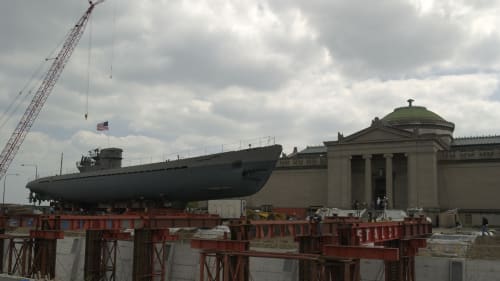
This riveting wartime story comes alive
Experience the only German sub in the U.S. in this dramatic exhibit and national war memorial to American sailors.
